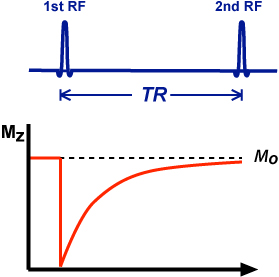Larmor Frequency
Larmor Frequency
The Larmor frequency and equation are named after the Irish physicist and mathematician Joseph Larmor (1857-1942).
Protons and neutrons pair up in nuclei causing the cancellation of their individual angular momentum. All nuclei also have a spin; those with an odd number of protons and/or neutrons will have a property called a magnetic (dipole) moment. Magnetic moment is characterized by its alignment with an external magnetic field analogous to a small bar magnet. These particular nuclei are also called dipoles because they have two poles like the north and south pole of a bar magnet. H-1 and P-31 are examples of nuclei with an unpaired proton. N-14 is an example of a nucleus with both an unpaired proton and neutron.
In addition to alignment of nuclei with a magnetic moment, application of an external magnetic field will produce a secondary spin or wobble (precession) of nuclei around the main or static magnetic field. The precessional path around the magnetic field is circular like a spinning top.
The Larmor or precessional frequency in MRI refers to the rate of precession of the magnetic moment of the proton around the external magnetic field. The frequency of precession is related to the strength of the magnetic field, B0.
The precessional frequency of nuclei of a substance placed in a static magnetic field B0 is calculated from the Larmor Equation:
ω = γB
where ω is the Larmor frequency in MHz, γ is the gyromagnetic ratio in MHz/tesla and B is the strength of the static magnetic field in tesla. Note that the gyromagnetic ratio is defined in different ways by different authors. See the article on gyromagnetic ratio. In this case a useful, simplified version is shown representing the Larmor frequency when B0=1.
- The gyromagnetic ratio (MHz/T) for a few commonly measured or imaged isotopes are :
- H-1 42.58
- F-19 40.05
- Na-23 11.26
- P-31 17.24
B0
The B0 in MRI refers to the main static magnetic field and is measured in teslas. The majority of MRI systems in clinical use are 1.5 T, with increasing numbers of 3 T systems being installed.
Altering the field strength will affect the Larmor frequency at which the protons precess.


Comments
Post a Comment